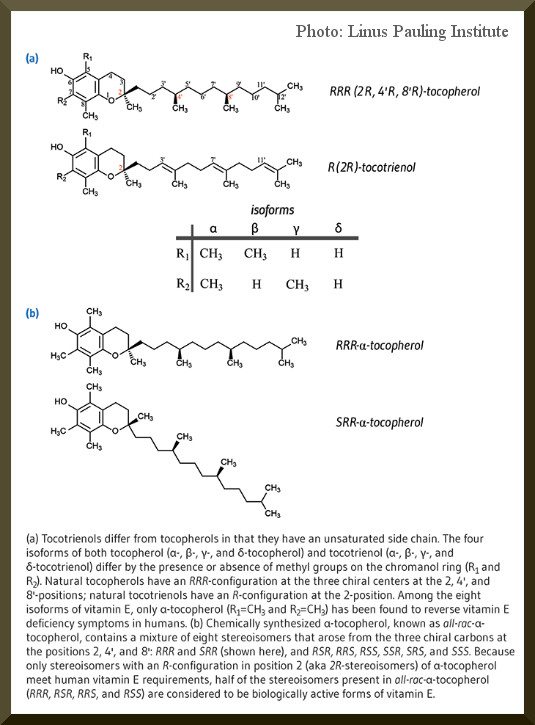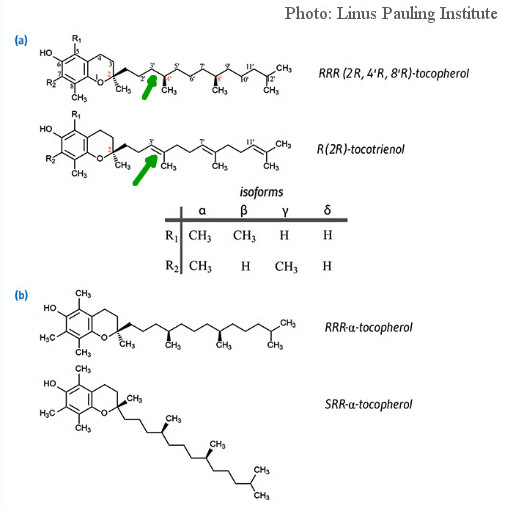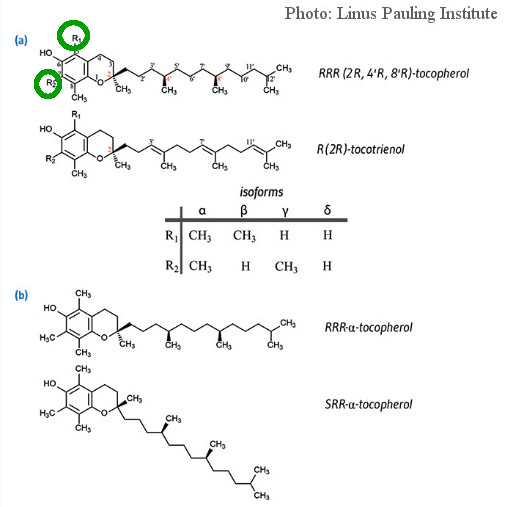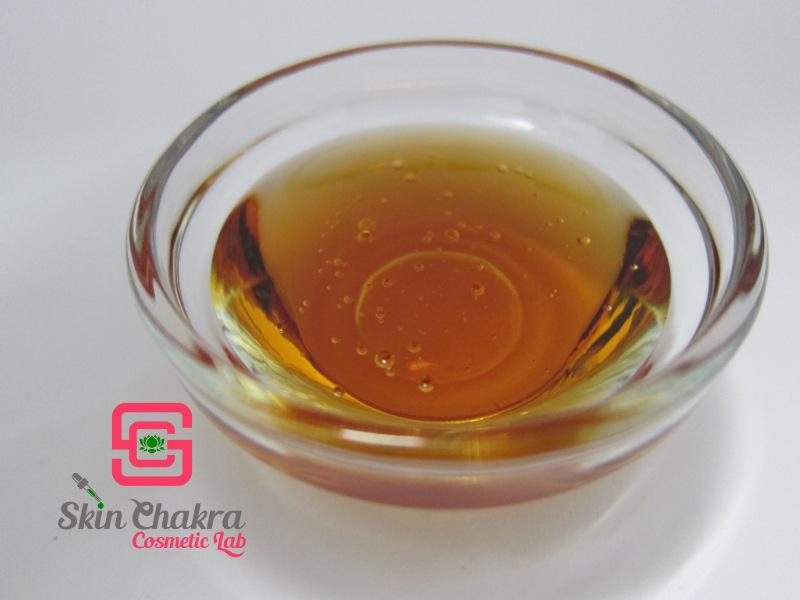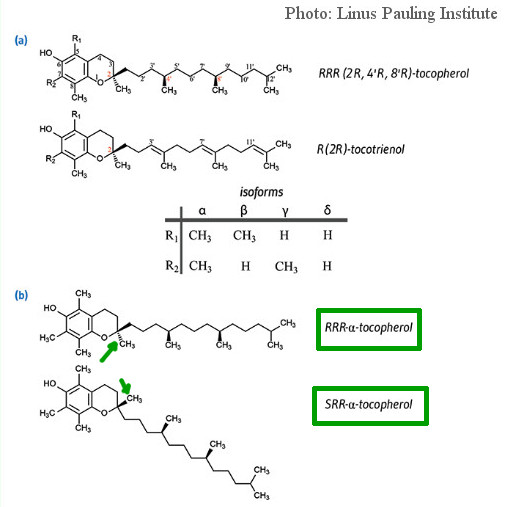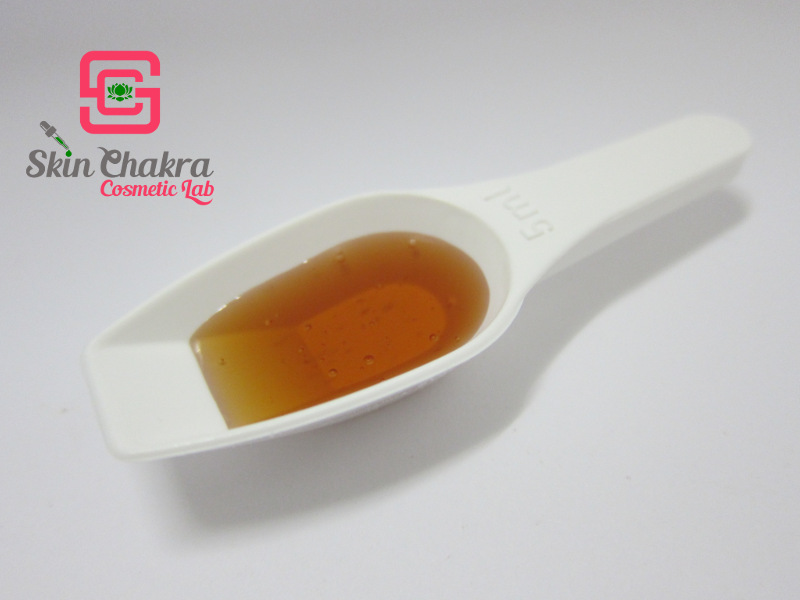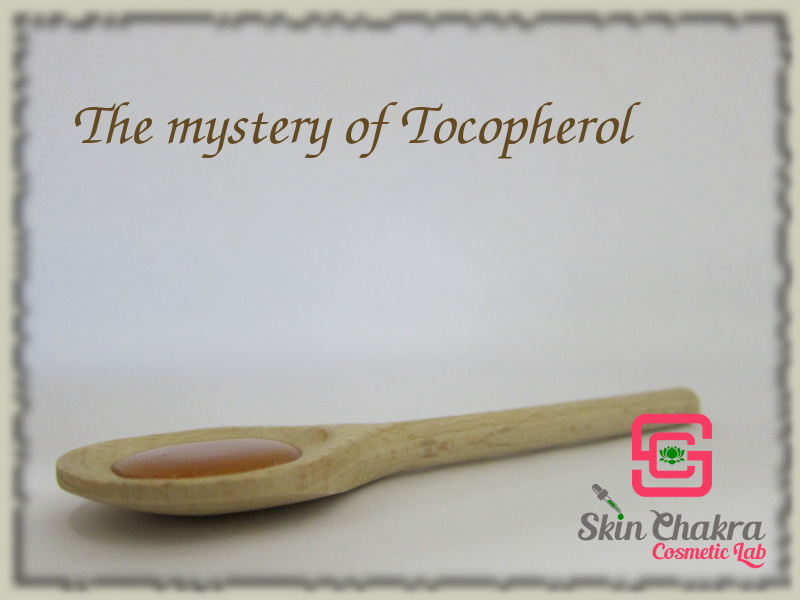
Freitag, 24. März 2017
What you need to know about Tocopherol (Vit E)
Tocopherol or vitamin E is one of those "must have" ingredients in every formulator's stash. Yet regarding the diversity of all forms of available tocopherol could be quite overwhelming for new students to "organic skincare formulation" science.
Although we've discussed about tocopherols and their different available forms in the past, since new readers don't have the patience to dig-out old posts, I'm reviving this topic and answer some of the questions we were confronted with quite recently.
I'm sorry but I need to refresh your chemistry at the beginning before jumping to your most frequent question: "which tocopherol shall I buy for my formulations?"
What is Vitamin E
Vitamin E is a collective name for a large group of natural and synthetic lipophilic ingredients. Basically "natural" vitamin E exists as chemically slightly different isomers:
- alpha-, beta-, gamma- and delta tocopherol
- alpha-, beta-, gamma- and delta tocotrienol
That sounds quite confusing, doesn't that? (we'll come to that later)
Tocopherols are naturally found in seeds, grains, nuts and related oils. They are all fat soluble (lipophilic).
Download our booklet: "Vit-E-Booklet.pdf" to see wich plant oils have the highest content of tocopherol
Now let's go back to the chemistry of tocopherols and tocotrienols.
Look at the following picture
It is a very compact illustration of all tocopherol/tocotrienol isomers from the Linus Pauling institute which is one of the most reliable and valuble resources when it comes to vitamins, natural ingredients and diet.
To make it a little bit more digestible, I broke this diagram to small pieces. The first thing is the difference between tocopherols and tocotrienols. You've probably hardly heard of tocotrienols because they are rarely used in skin care. They are mainly being applied in dietary supplements and drugs. But just in case you hear about them:
Tocopherols and tocotrienols are very similar in structure, except the hydrocarbon chain which is unsaturated in tocotrienols (green markers on the photo). It means that by being unsaturated, tocotrienols are more susceptible to oxidation and to UV-light but we're not going to dedicate anymore time to them.
The four isomers of tocopherol (alpha, beta, gamma and delta) are very similar in structure and only differ slightly by presence of methy (CH3) in the chromanol ring.
These four isomers are present at different ratios in different seeds and related oils. Wheat germ oil for example has a very high concentration of alpha-tocopherol whereas black currant oil has a high concentration of gamma-tocopherol.
Synthetic vs. natural
Now let's go to the most important difference (from a natural cosmetic formulator's point of view).
Tocopherols and tocotrienols are available both as natural (derived from plant oils) or synthetic ingredients.
There is a main difference between the natural and synthetic tocopherols/tocotrienols and that is in stereochemistry of the molecules (chemistry again!!!)
Tocopherol (or tocotrienol) molecules have a certain orientation in the 3-dimensional space which is hardly recognizable when the molecule lies flat on a piece of paper.
The only difference between these forms is the way they react with polarized light. To distinguish these two forms (two sterioisomers or two different orintations in space), they are called L and D forms or S and R forms. (Don't need to worry about them, just keep in mind that there are two existing forms)
Now the fun part is here:
The nature is very selective and ALL natural vitamin E (tocopherols and tocotrienols) are only available in one form: the D form or RRR to be exact.
All synthetic and man made vitamin E forms (tocopherols and tocotrienols) consist 50% of one form and 50% of the other form. They are all, DL .
It means, if your supplier is selling you a DL tocopherol, it is a synthetic vit E. Unfortunately however, this is not mentioned in the INCI name. All tocopherols: the stereoisomer (D or DL form) and the tocopherol form (alpha-, beta-, gamma- or delta-) have the same INCI name: tocopherol. Which one you're really purchasing, should be provided to you as additional information by the supplier.
Tocopherol esters
There are other synthetic derivatives of tocopherols such as:
- Ascorbyl tocopheryl acetate
- Tocopheryl acetate
- Tocopheryl glucoside
- Tocopheryl phosphate
- Tocopheryl succinate
or even PEG-derivatives (why on earth shall a chemist want to attach tocopherol to PEG?).
These tocopheryl esters, which are all synthetic (made in laboratory) are much more stable than tocopherols and tocotrienols but are less effective as an antioxidants because they are biologically less active.
Available commercial tocopherols:
Now after this boring introduction to chemistry of tocopherols we come to your essential question of : which one to buy.
I basically focus on tocopherols, I do not include tocopheryl esters (because they are synthetic) and do not include tocotrienols becuase they are hardly applicable in skin care.
Tocopherols are available in different forms from powder to liquids with10-95% tocopherol content.
First things first:
In skin care, we handle with gr and percentage whereas in supplement industry they handle with IU. When purchasing a tocopherol for skin care, you need to know the content of the tocopherol (and the different forms) in percentage and not in IU.
The powders (granules) are usually used in the food and pharma industry and contain a substrate of starch or other material to help them easily disperse. These are not suitable for cosmetic applications.
Liquids:
Liquid tocopherol is available in concentrations between 10-70% in a carrier oil, usually sunflower or soybean oil or with an assay of about 95-98% in pure form (no carrier oil). The most common form is 70%. Although 90-95% tocopherol obviously contain more tocopherol and less soybean or sunflower oil, it has an extremely high viscosity and is very sticky and hard to work with, but if you prefer to have less carrier and more tocopherol, then go ahead and purchase the 90-95%.
No matter which liquid you choose, pay attention to the carrier oil and whether it is GMO or not.
Mixed or pure:
For skin and hair care, tocopherols are usually available as alpha-tocopherol or a mix of alpha-, beta-, gamma- and delta tocopherol.
all tocopherols are effective antioxidants. When it comes to protecting your ingredients against oxidation, gamma-tocopherol seems to be the most effective isomer. When it comes to biological activity and inhibiting membrane and extracellular lipid peroxidation, it seems that alpha-tocopherol is the most effective one.
Synthetic tocopherol is usually available as DL-alpha tocopherol. Natural tocopherols are very often a mix of all four isomers, this is the way the nature delivers them.
Both synthetic (DL) and natural tocopherols (D form) are effective antioxidants when it comes to protecting your ingredients (plant oils for instance) against oxidation. When it comes to cellular protection and biological activity, it is only the D form (natural stereoisomer) that is biologically active.
Application dosage:
Tocopherol is usually added to plant oils to inhibit their oxidation and prolong the shelf-life. It doesn't completely stop the oxidation though. The usuall dosage is between 0.1-0.5%
It is added to the lipophilic products such as serums, oil blends, balms and butters for the same reason with a dosage between 0.1-0.5%.
For its biological activity however (inhibiting cell membrane peroxidation, emolliency, skin and hair protection, improving skin texture, wound healing etc.) it is added between 0.5-1.0% . In some special products (enhanced serums, vit E creams and lotions, etc.) the application dosage is higher (up to 50% in serums up to 10% in balms, butters and emulsions).
Bottom line:
Which tocopherol form you decide to use, depends on your product concept, ethos, budget and the availability of the resources. The most important issue is that you know what you are using.
I hope this (long and boring) post can answer some of your questions about tocopherols. Don't hesitate to send us your questions . We usually answer the questions on our telegram channel in 24 hours.
Be aware that the most common source for natural tocopherols (and tocotrienols) is palm oil. If you work in a palm-free concept, make sure that natural vitamin E you are purchasing is palm-oil-free.
BeHappy and have fun
Some more reading stuff:
http://lpi.oregonstate.edu/mic/health-disease/skin-health/vitamin-E
http://lpi.oregonstate.edu/mic/vitamins/vitamin-E#food-sources

